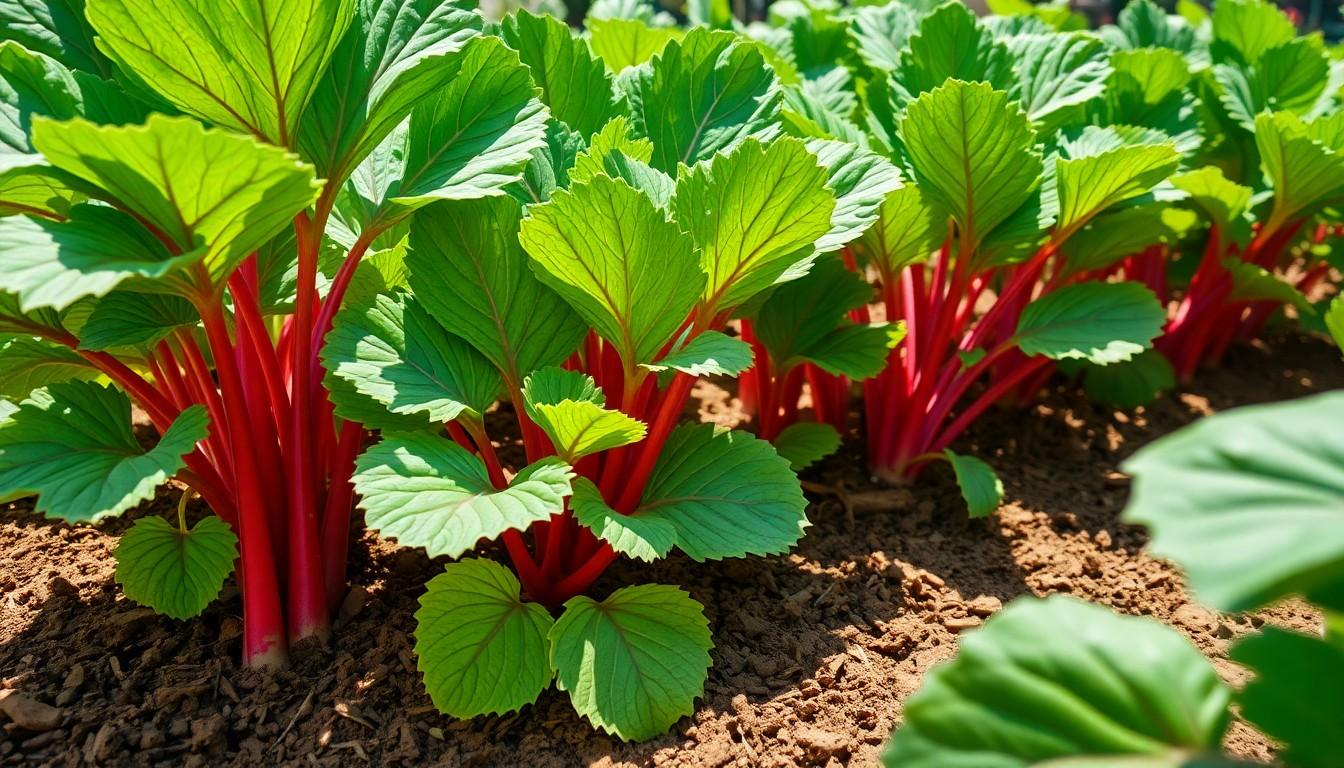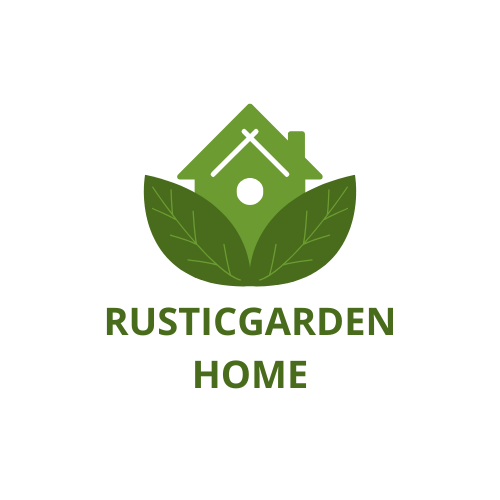Rhubarb: the plant that’s as tart as your favorite aunt’s comments at family gatherings. While it might not be the star of the vegetable world, this perennial powerhouse deserves a spot in every garden. With its vibrant red stalks and unique flavor, rhubarb can elevate any dish from ordinary to extraordinary. But before diving into a rhubarb recipe, it’s crucial to understand how to care for this quirky plant.
Understanding Rhubarb Plant Care
Rhubarb thrives in well-drained, loamy soil enriched with organic matter. Fertilizing it in early spring boosts growth and improves flavor. A balanced fertilizer with equal parts nitrogen, phosphorus, and potassium effectively supports strong development.
Watering plays a crucial role in rhubarb care. This plant requires consistent moisture, especially during dry spells. Mulching around the base helps retain soil moisture and suppress weeds. It’s advisable to check the soil moisture regularly, ensuring it stays evenly moist without becoming waterlogged.
Sunlight exposure significantly affects growth. Rhubarb prefers full sun to partial shade, benefiting from at least six hours of sunlight daily. In hotter climates, providing afternoon shade can prevent leaf scorch and promote healthier plants.
Pruning helps maintain plant health. Shedding older, damaged leaves encourages new growth. By cutting back dead foliage in late fall or early spring, gardeners stimulate fresh shoots.
Pest management requires vigilance. Aphids, slugs, and spider mites may pose threats to rhubarb plants. Regular inspections and prompt action using insecticidal soap or neem oil can effectively control infestations.
Diseases also impact rhubarb health. Crown rot and leaf drop are common issues. To prevent these, avoid overhead watering and ensure good air circulation around the plants. Selecting disease-resistant varieties, when possible, enhances longevity.
When harvested, rhubarb stems should be cut rather than pulled. This method preserves the crown, enabling ongoing growth. Harvesting typically begins in spring, with young stems producing the best flavor. Avoid harvesting too many stems in one season to allow the plant to recover for future yields.
Essential Growing Conditions

Rhubarb thrives under specific growing conditions that ensure its health and productivity. Understanding these basics helps in achieving a successful harvest.
Soil Requirements
Rhubarb prefers well-drained loamy soil enriched with organic matter. Incorporating compost increases nutrient availability and improves soil structure. High moisture retention is essential, so avoid heavy clay or compacted soils that hinder drainage. Soil acidity should range between 6.0 and 6.8 for optimal growth. Regularly testing the soil helps maintain these parameters. Adding a balanced fertilizer in early spring supplies necessary nutrients, fostering robust plants. Following these guidelines promotes vigorous growth.
Sunlight Needs
Full sun exposure is vital for rhubarb, requiring at least six hours of sunlight daily. Choosing a planting site with optimal sunlight enhances flavor and growth rate. In hotter climates, providing afternoon shade protects against scorched leaves. Partial shade can suffice, though it may result in reduced yields. Monitoring light conditions throughout the day ensures plants receive adequate sunlight. Proper sunlight promotes healthy leaf development, allowing for a more abundant harvest. Adjusting for these needs leads to thriving rhubarb plants.
Watering and Fertilization
Proper watering and fertilization significantly influence rhubarb’s health and yield. Attention to these factors ensures robust growth and enhances flavor.
Best Watering Practices
Maintaining consistent moisture remains essential for rhubarb. Watering once a week provides adequate hydration, though more frequent watering may be necessary during extended dry spells. Soaking the soil to a depth of 6 inches encourages deep root growth, while avoiding waterlogging protects against diseases like crown rot. Utilizing mulch helps retain soil moisture and regulate temperature, creating an ideal environment for rhubarb. Observing the soil’s dryness can determine when to water again.
Recommended Fertilizers
Choosing the right fertilizer directly impacts rhubarb’s vitality. Applying a balanced fertilizer, like a 10-10-10 formula, in early spring supplies essential nutrients. Incorporating compost boosts organic matter in the soil, enhancing nutrient availability for rhubarb. Regular applications of organic fertilizers every four to six weeks during the growing season support continued growth and development. Monitoring for signs of nutrient deficiency, such as yellowing leaves, serves as a guide for adjusting fertilization practices.
Pest and Disease Management
Effective pest and disease management ensures a healthy rhubarb plant and promotes better yields. Vigilance and intervention are crucial for maintaining its vitality.
Common Pests
Aphids frequently target rhubarb, sucking sap and leading to weakened plants. Slugs present another issue, often damaging leaves by creating irregular holes. Implementing barriers, such as copper tape or diatomaceous earth, reduces slug populations effectively. Insecticidal soap proves useful against aphids, offering a safer alternative to chemicals. Regular monitoring allows for early pest detection, ensuring timely action.
Disease Prevention
Crown rot represents a significant threat, commonly caused by waterlogged soil conditions. Maintaining well-drained soil aids in preventing this disease. Leaf drop often occurs due to fungal infections, which thrive in overly damp environments. Ensuring proper air circulation around plants minimizes humidity levels, reducing disease risk. Overhead watering aggravates issues; thus, applying water directly to the soil’s surface helps keep foliage dry.
Harvesting and Maintenance
Harvesting rhubarb requires careful timing and technique to ensure a healthy yield.
When to Harvest
Harvesting typically occurs in spring when the stems reach about 12 to 18 inches in height. Consider cutting stems between April and June for the best flavor. Choose young, firm stalks with a deep red color. Older stems, especially those with a stringy texture, may lack taste and should be left on the plant. Timing is important, as overharvesting can weaken the plant. Leave at least one-third of the plant intact for continued growth and vigor.
Post-Harvest Care
After harvesting, focus on the plant’s recovery and maintenance. Water rhubarb consistently to support regrowth, especially after a significant harvest. Applying a balanced fertilizer can enhance nutrient availability. Mulch around the base helps retain moisture and suppress weeds. Inspect the plant for pests or signs of disease following harvest. Remove any damaged leaves to prevent further issues. Proper post-harvest care ensures the plant continues to thrive and produces healthy stalks for future seasons.
Conclusion
Caring for rhubarb is a rewarding endeavor that yields delicious results. By providing the right soil conditions and ensuring adequate sunlight and moisture, gardeners can cultivate healthy plants that thrive season after season.
Regular maintenance practices such as proper pruning and vigilant pest management are essential for promoting robust growth. Harvesting at the right time allows for the best flavor while ensuring the plant’s longevity.
With these care tips in mind, anyone can enjoy the unique taste of rhubarb in their culinary creations. Embracing these practices not only enhances the garden but also enriches the dining experience.

